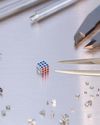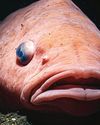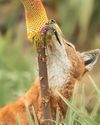
Wander through your garden, or walk along a stream, and it's likely you'll see a snail - small, squishy animals with shells on their backs. You may also encounter slugs, which are slow-moving animals related to snails. They look alike except that slugs don't have shells. One thing they all have in common, though, is that they move slowly. Here's an example of just how slow they are: the World Snail Racing Championships, held in the UK, pits the quickest snails against one another in a "foot race". The fastest snail on record sped through the course at a blazing 0.06 miles per hour. Or to look at it another way, if you were that slow, it would take you about three minutes to get a bite of food from your plate to your mouth.
Molluscs are everywhere
Bu hikaye The Week Junior Science+Nature UK dergisinin Issue 62 sayısından alınmıştır.
Start your 7-day Magzter GOLD free trial to access thousands of curated premium stories, and 9,000+ magazines and newspapers.
Already a subscriber ? Giriş Yap
Bu hikaye The Week Junior Science+Nature UK dergisinin Issue 62 sayısından alınmıştır.
Start your 7-day Magzter GOLD free trial to access thousands of curated premium stories, and 9,000+ magazines and newspapers.
Already a subscriber? Giriş Yap

Are cats smarter than dogs?
They're the UK's top pets, but which is more intelligent? You decide!

Could people turn Mars into another Earth?
Sven Bilén explores how humans might make a home on another world.

FUNNY BY NATURE
Claire Karwowski tracks down the wackiest wildlife that's cracking up the animal kingdom.

WEIRD SCIENCE
A round-up of the strangest science stories from around the world.

Guardians of the forest
Meet the incredible people protecting the Amazon rainforest.

The Mariana Trench
Dive in to find out how far down the ocean goes and what it's really like at the bottom.

Megan McCubbin
Meet the zoologist trying to change people's views of animals with a bad rep.

MAX POWER
From the second you wake up in the morning, your way of life is made possible thanks to the amazing power of electricity.

Your heart has a "brain"
New research by scientists at Sweden, and Columbia University, in the US, suggests that your heart could have its own \"mini brain\".

Ethiopian wolves could be furry pollinators
Sweet-toothed Ethiopian wolves have been seen lapping up nectar have been seen happing up nectar from red hot poker flowers.